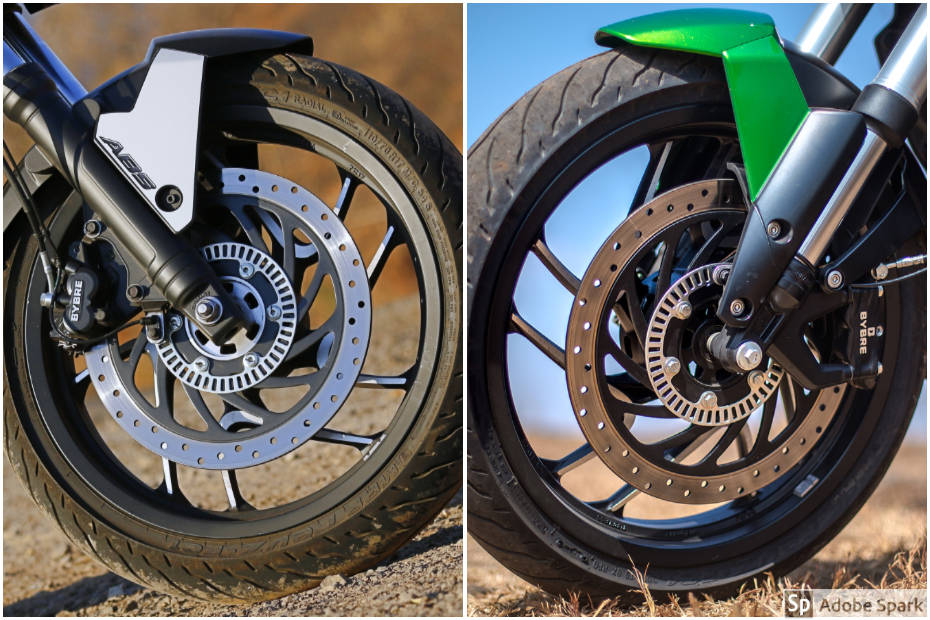Radial vs Axially Mounted Calipers: Differences Explained
Modified On Apr 30, 2020 02:29 PM By Gaurav Sadanandfor Bajaj Dominar 400
- 898 Views
How does the mounting position of calipers affect a bike’s braking? Is a radial caliper better than an axially mounted unit? Here's what you need to know

Ever wondered why the Bajaj Dominar moved from using a telescopic fork to an upside-down unit? Or why it features a radially mounted caliper instead of an axially mounted one? It’s because the latter of each point has its own benefits. We’ve already explained the advantages and disadvantages of different fork types which you can read about here. As for a motorcycle’s braking setup, here’s what you need to know.
Most budget-friendly motorcycles like the Bajaj CT110 make use of drum brakes at both ends in order to cut costs. However, more modern bikes such as the TVS Apache RTR 160 4V come equipped with an axially mounted disc brake up front. Head further up the pecking order and you’d notice radially mounted calipers and larger rotors slapped onto bikes like the KTM 200 Duke, Honda CB300R and the Bajaj Dominar 400, amongst others. What differentiates the two setups is the way they’re mounted onto the fork.
Axially-mounted calipers, for instance, are secured by bolts that run perpendicular to the disc, while radial calipers are held by bolts that are parallel to the disc brake. Essentially, the position of the mounting bolts determines if the brakes are radial or axial. And much like forks, rigidity is crucial when it comes to braking setups.
Advantages & Disadvantages:

Like most two-wheeler tech, radial-mounted calipers originates from the race track. The positioning of radially mounted calipers allows for more rigidity or less torsional flex (lateral movement) which translates to crisper-feeling brakes at the lever. In other words, radial calipers are fastened at both ends rather than one end as can be seen on traditional calipers. As a result, the former setup offers less caliper flex and better pad-to-disc contact under maximum braking.

The exact same principle applies to master cylinders of brake levers. In an axial master cylinder, the piston runs parallel to the handlebar, whereas the setup is perpendicular to the handlebar in a radial master cylinder. So when you pull on the lever, a radial setup applies direct force on the piston which forces fluid to the calipers, squeezes the brake pads and make you stop. The outcome is better feel and feedback.
An axial master cylinder, on the other hand, applies force to the piston in a swivel motion (90 degrees by the lever pivot) resulting in less feel and feedback. Besides, radial master cylinders are more often than not made from better materials and designed to be more rigid. Moreover, many brake levers offer position adjustment, case in point the KTM 390 Duke.
All said and done, the way your bike brakes boils down to a number of factors, and the way calipers or master cylinder are mounted is just a small piece of the pie. Other aspects include braking lines, brake pads, tyres, rotor size, rotor type and much more! Riders who use their bikes for city commutes wouldn't find any difference between radial or axial calipers.
